It’s early morning, and despite the color and chaos of Mexico City just minutes away, the only sound filling my ears is a wooden paddle carving lazily through the water amidst the calls of wetland birds. A burgeoning sun bounces off a labyrinthine network of canals while the silhouette of the Sierra Madre towers in the distance.
I have come to Xochimilco, whose name comes from a Nahuatl phrase meaning ‘where the flowers grow.’ Behind me sits my guide, biologist and Xochimilco native Alejandro Gaona Dehesa, who steers the canoe while regaling me with stories of the area’s history and pointing out its various kinds of birdlife.
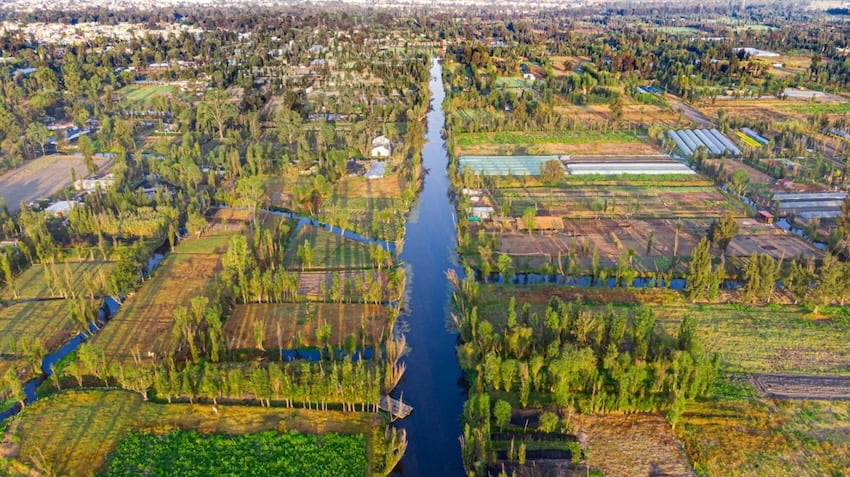
Located 28 kilometers south of Mexico City, Xochimilco is a green paradise of winding waterways home to the ancient chinampas, where families have been growing crops for the past thousand years on these oblongs of land that are proven to be some of the most sustainable and productive agricultural systems in the world.
Yet to navigate Xochimilco’s myriad corners and canals is also to discover a place that has been overtaken by recreation, with the majority of the landscape swallowed by soccer fields and areas hired out for private celebrations. Meanwhile, its deceptively deep waterways are polluted by the hundreds of flat-bottomed trajinera boats, where tourists and locals flock for cheap booze cruises, the increasing number of motorboats that plague the area and pollution from a harmful cocktail of fertilizers and fossil fuels.
Living history in Xochimilco
Alejandro Gaona Dehesa works as a bilingual environmental educator and manager of the production team at Humedalila, a small non-profit that was founded in 2014 with the mission of preserving the Xochimilco wetland. As part of its four lines of action — ecological restoration, scientific research, environmental education and sustainable development — Humedalia also runs tours through Xochimilco to visit their fully functioning chinampa.
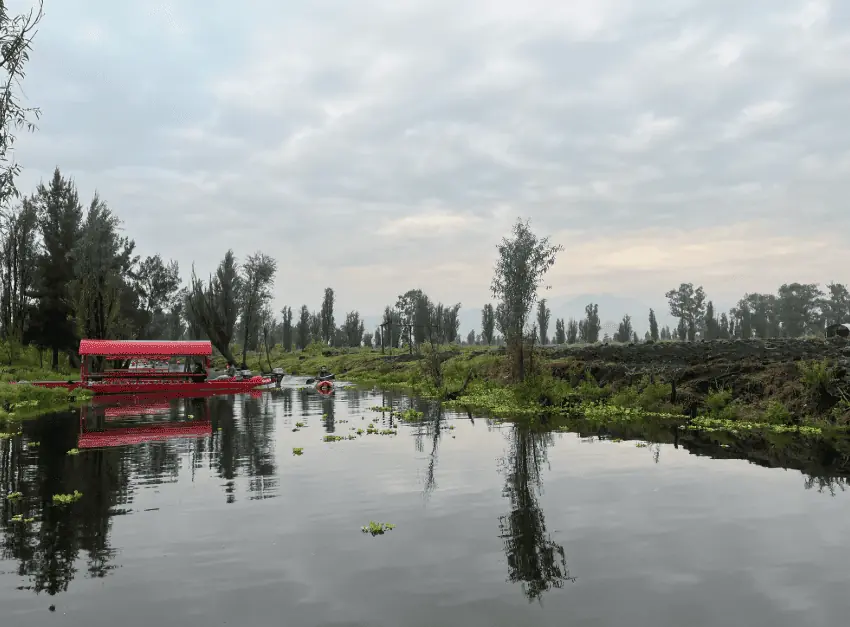
Often mistakenly referred to as ‘floating gardens,’ the chinampas have been a fixture of the Xochimilco landscape for over 1000 years. “In their heyday — between the 12th and 16th centuries — they were capable of producing up to four tons of crops per year,” Alejandro tells me. “Each year, the chinampas could accommodate up to four growing cycles, which was an unheard-of quantity at that time.”
Representing one of the most sustainable and productive food systems in the world, these simple oblongs of land are a testament to the ingenuity of the Xochimilcas, who drained the southern branch of the great lake of Texcoco and transformed it into agricultural land. “Back then, the chinampas didn’t need irrigation since the land would naturally absorb the water,” Alejandro explains. Our canoe draws alongside the plots owned by Humedalia. Its flower beds are alive with butterflies. Volunteers pick produce straight from the earth and a goat munches idly on a patch of grass while rows of seedlings line the banks waiting to be planted. Each square capsule is like a piece of living history, with a hopeful sprout in the middle. These ‘chapines’ are made using mud from the bottom of the wetland, a technique that has survived for the past millennium and remains an extremely effective — albeit time-consuming — plastic-free method of planting seedlings.
An area under threat
The history of this ancient terrain is vast and complex, but in recent decades much has been done towards the area’s preservation. In 1986, Xochimilco was recognized as a historic monument zone by the Mexican government, and the following year it was officially designated as a World Heritage Site by Unesco, putting the area on the international map. In 1989, the government of Mexico City introduced the Xochimilco Ecological Rescue Plan, the first document to officially establish regulations dedicated to Xochimilco’s improvement and management. Since then, the area has received status as a protected national park and a Ramsar site. In 2017, the Food and Agriculture Organization of the UN designated Xochimilco a Global Important Agriculture Heritage System, intending to preserve and maintain the chinampa system.
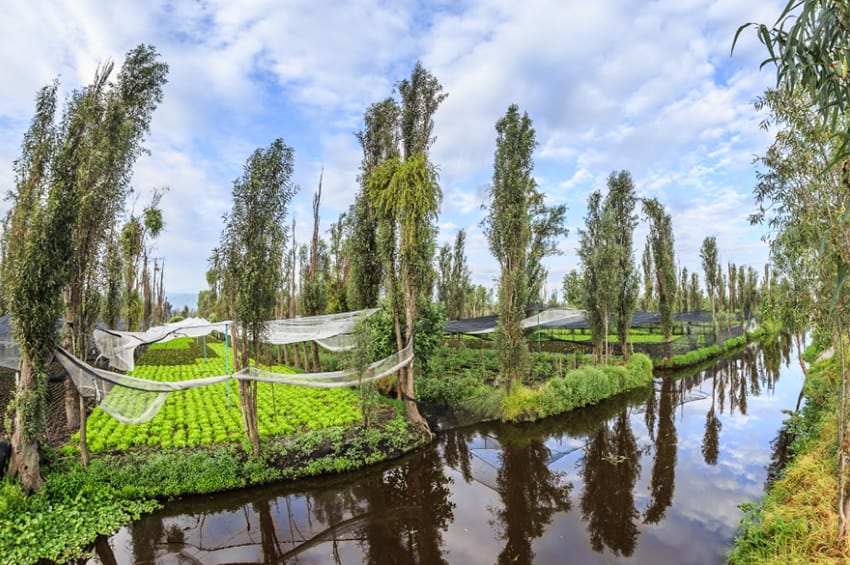
But despite this litany of labels and the myriad regulations introduced to better manage the area, Xochimilco is a delicate ecosystem that remains under threat. “The failure to enforce management plans has been detrimental to the area,” observes Alejandro. “This, combined with global warming and changing climate conditions means that the chinampas are declining and have been for years. Fewer people are farming here than ever before, with just 15 percent of the national park now being used for agriculture. Based purely on observation, the average age of the farmers who still work here is above 40.”
The area has been a major focus for the National Autonomous University of Mexico (UNAM) as a result of the dwindling population of axolotls that reside in its waters, with recent reports claiming that an investment of 600 million pesos over the next 10 years will be required for both the recovery of Xochimilco and its wild axolotl population.
“Axolotls are at their lowest numbers ever. The last count numbered circa 40 individuals per square kilometer of water,” Alejandro elaborates. “The largest causes of this 99% reduction in numbers from 1998 to 2014 include the takeover of invasive species, water pollution, human activities and climate change.”
Global warming is slowly but surely modifying the routines and rhythms of millennia-old growing calendars, while Xochimilco battles a water crisis defined by a lack of resources in the system due to the introduction of substations in the 20th century and pollution resulting from the use of agrochemicals and increasing numbers of motorboats.
“These motorboats are eroding the borders of the land, losing ancestral land in the process,” explains Alejandro. Elsewhere, the omnipresent water hyacinth, as well as other invasive species such as carp and tilapia, put pressure on native species to survive.
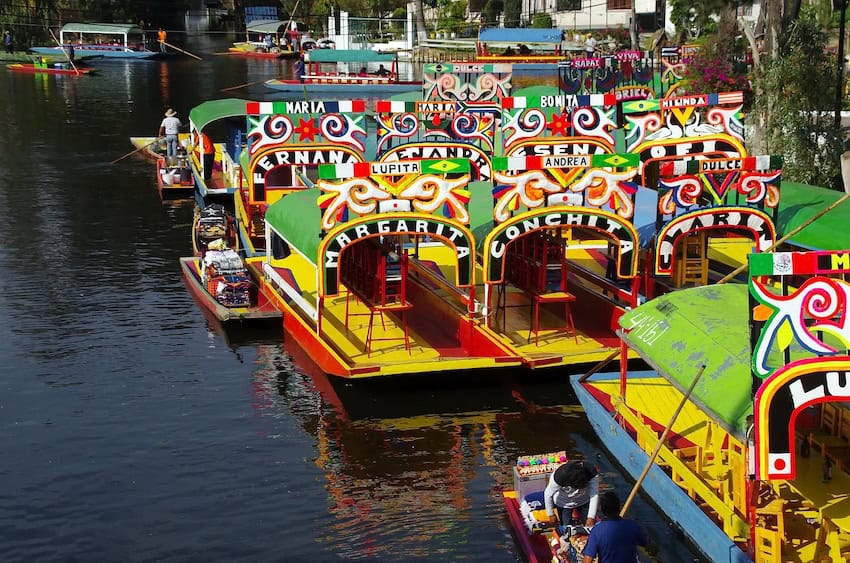
Beyond the trajineras
For years, tourists and locals alike have been drawn to Xochimilco thanks to the hundreds of colourful trajineras that line its banks. However, their impact on the culture of Xochimilco deserves more mindful consideration. “It’s important to acknowledge that organizations such as ours aren’t entirely against the trajineras,” Alejandro states. “They represent the original way of moving around and conducting tourism in the area. They also help the local economy in that most of the boats are owned by people from here, so the money stays in Xochimilco.”
Instead, what bothers organizations such as Humedalia is how “an ancient tradition has been distorted.” These boats have become floating bars, where the responsibility to take care of this beautiful place, shared by both owners and visitors, is often overlooked. Associations like Humedalia encourage eco-tourism initiatives as a more responsible alternative to explore Xochimilco: a gateway for visitors to educate themselves as to its ancestral heritage and raise awareness regarding the importance of its conservation. But this too, is not without its pitfalls.
“The gentrification of the area has brought a lot of fake ‘ecotourism’ experiences; the first red flag is if a company is marketed as ecotourism, they should not be using motorboats!” Alejandro and by extension, Humedalia encourage visitors to undertake independent research as to who owns such experiences, where the money is going and ask whether the people in charge are employing native people under fair conditions. As Alejandro says, “We believe that an ethical, respectful, native-oriented tourism is possible and it’s both the visitor’s and the host’s job to create it.”
The peaceful journey of canoeing through Xochimilco before spending an afternoon learning about the sustainable farming practices that still thrive in small pockets of this paradise, allows you to savor the best of this special place while contributing to its conservation for generations to come. “We have to act now because there is nowhere else like this in the world,” says Alejandro. “Xochimilco may be a link to the past, but it’s still very present, and if we listen to what native places like Xochimilco are saying, maybe we can learn from them how to live better in the future.”
Phoebe Harper is a freelance journalist.
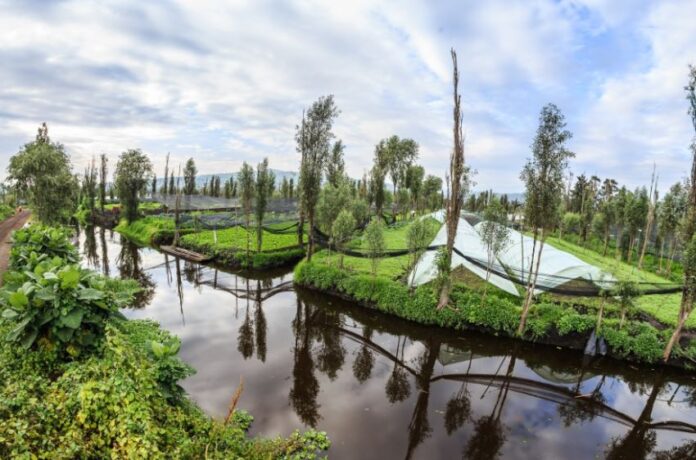
Great journalism……GRACIAS from Acapulco!
It’s good to see an article in MND that takes a deeper dive into the pros and cons of tourism. It’s a refreshing change from the uncritical cheerleading for mega tourism developments that appear too often in this publication.
I agree completely. All too often MND seems like little more than an arm of the tourist industry.
Mexicans need investment and tourism and jobs. I think the last thing they need is Gringos deciding for them what’s needed. Tourism provides investment and jobs. Bravo.
Thank you Phoebe. Very complete story. I wanted to visit but did not want to join a drunken fest on a trajinera. Now, you have given me an alternative that is eco-historic- tourist.
Loved my time learning about this magical place with humedalia when visiting Cdmx. Great story
I remember how dismayed I was to see what this beautiful place had become. Had not been there for a very long time & could not believe it had changed from a peaceful, quiet ride to a drunken free-for-all. Fingers crossed that it can be restored.
Those that use the area, visit, and run their businesses here are the right people to decide how it’s used. I see no reason to impose my beliefs and sensibilities on others.
great article, thanks for writing it.